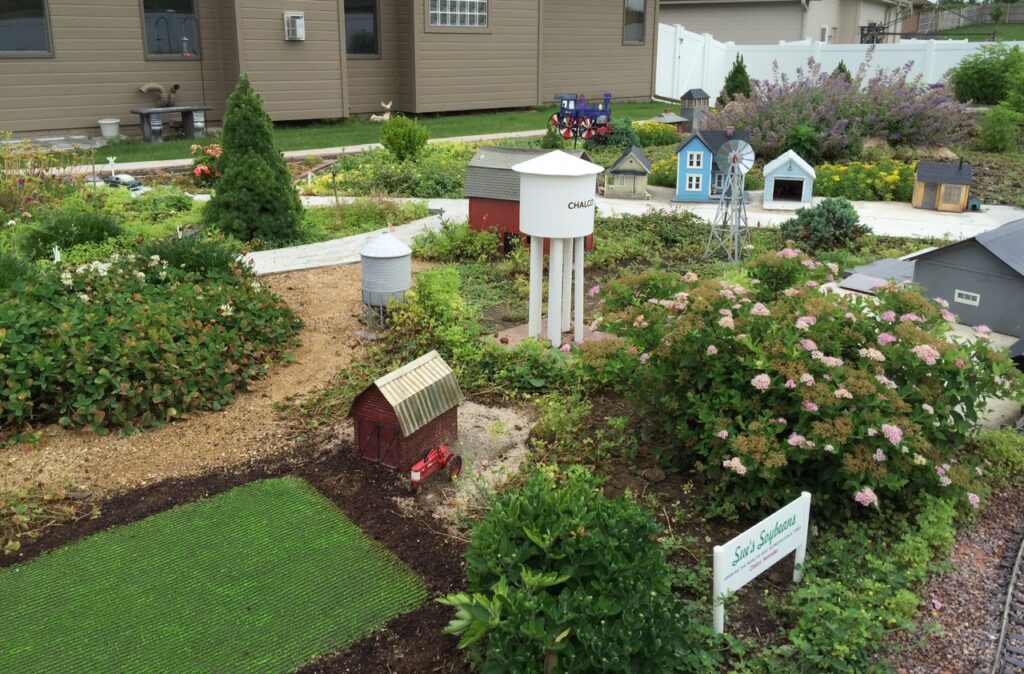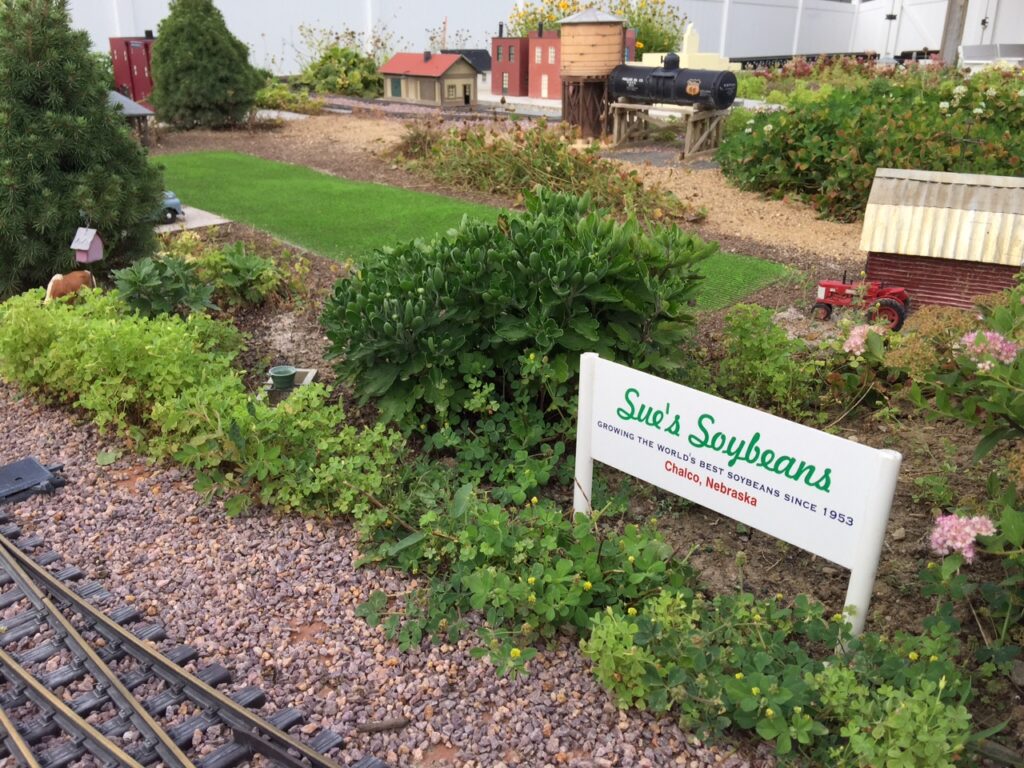
Always looking for new ways to make the farm scene on my garden railroad layout look more realistic, I decided to add a field of crops. With my limited knowledge of gardening, creating long rows of perfectly aligned tiny plants just wasn’t possible. I pondered several ideas but discovered the best one as I strolled the aisles at my local Ace Hardware store. I found a roll of carpet runner. I bought a 6-foot-long piece of the material, which would fit the available space on my layout perfectly. The material was inexpensive—I paid just $11.00 for the carpet.
Turning the ribbed style carpet into a believable miniature soybean field really took little work. The carpet was a light brown in color and had unwanted smooth edges. I trimmed them off with a razor knife on both sides, leaving roughly a half-inch of the material next to the first row. Then I spray painted the entire carpet with a dark brown paint.
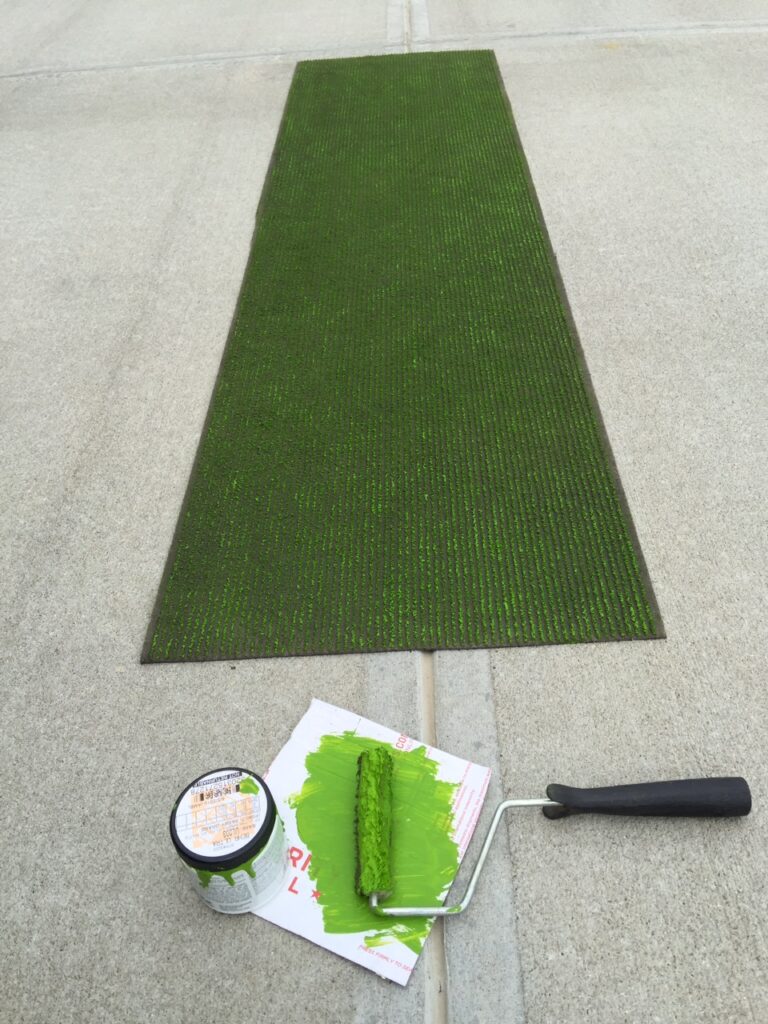
Next, take a small trim paint roller and lightly paint the tips of the ribs on the carpet dark green. Use a light touch when painting the tips of the ribs; otherwise, the green paint will seep between the crop rows. After the paint dried, I painted some rows randomly with a lighter color green paint. Some variation in color is good, as it adds more realism to the crop.
Installing the field took some planning, as I live in Nebraska and my layout endures upper 90-degree summer days on occasion with no shade and below zero temperatures in the winter months. Throw in high wind and torrential rain storms, and it goes without saying that I needed a solid method of attaching the soybean field to the ground. I settled on a simple way of securing the field to the ground.
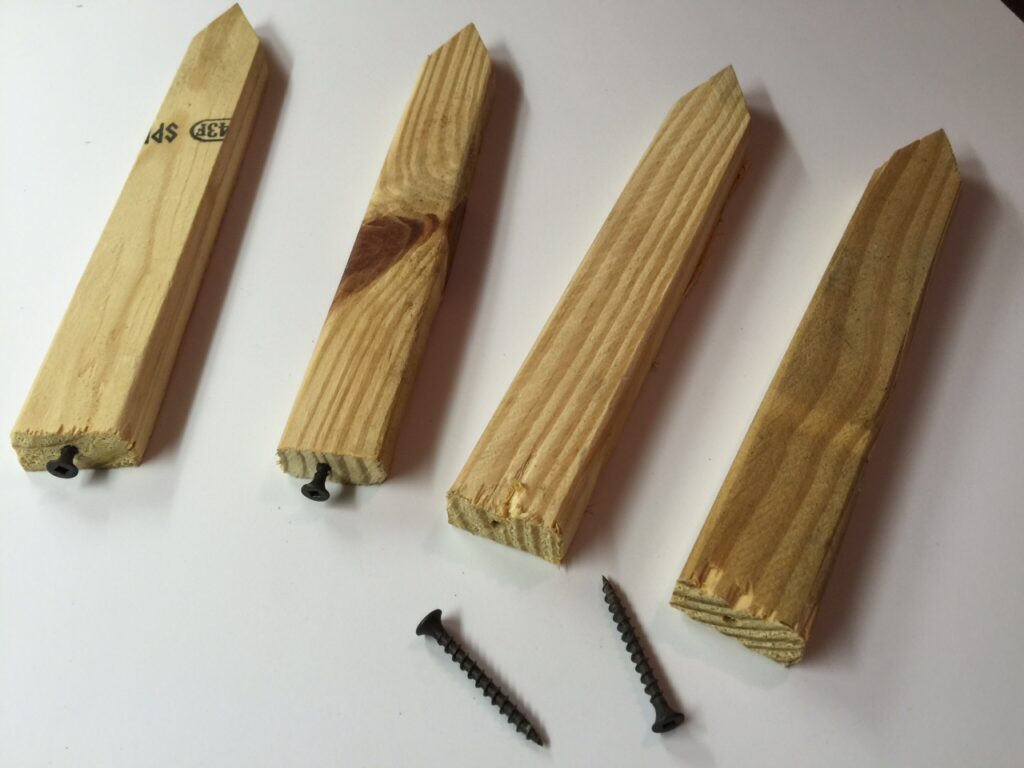
I used four wood stakes that I drove into the ground, then I used screws to anchor the material at each corner. A member of my garden railroad club mentioned I could have glued the carpet material to a sheet of PVC material or concrete board and just laid the piece on the ground. I’m sure this would work, but I think using my method pulls the material closer to the ground. I do have a little wave in the field but I’m ok with that as it adds a bit of realism.
The field of soybeans has survived its first rain storm and I’m happy to report it survived. A little dirt from the surrounding area did flow in and around the field, but I can easily sweep that off later if I desire.
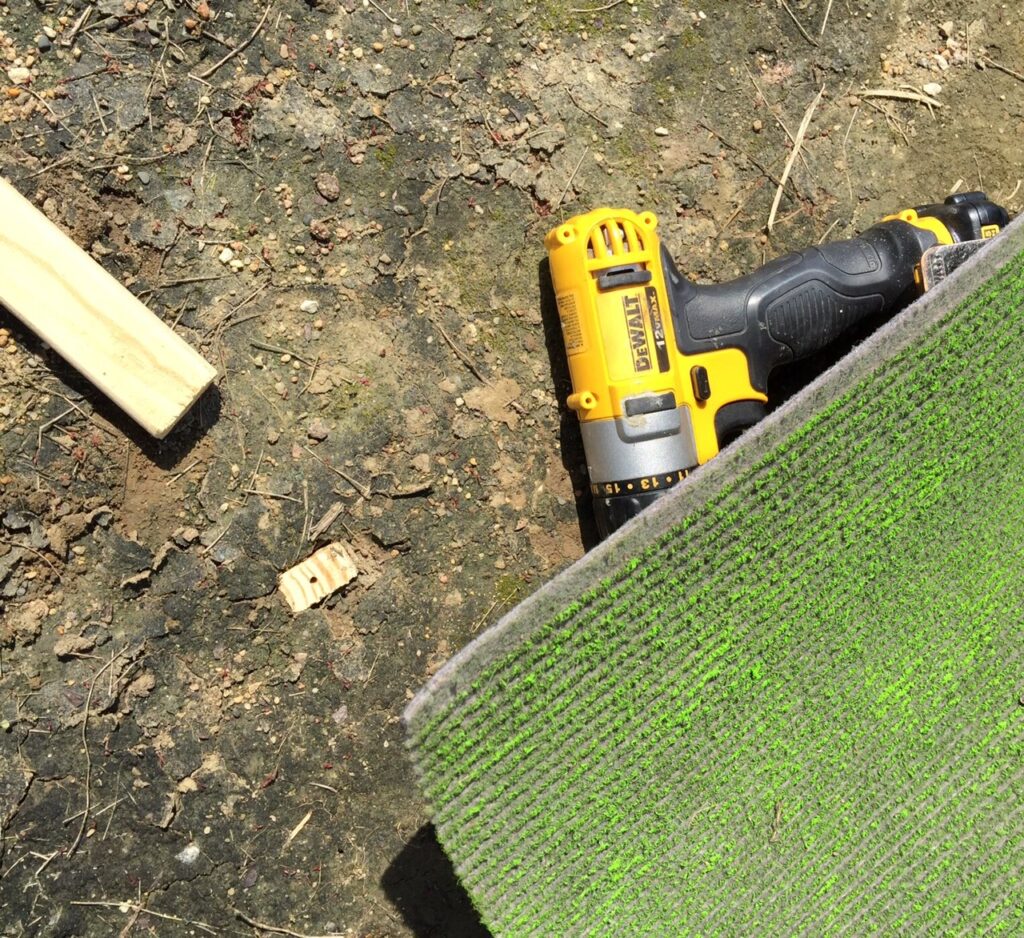
My wife Karen grew up in a small farm in southwest Iowa. Her Mom affectionately called her by her middle name, Sue, so it was easy to find a name for my soybean company. I only remember her Dad growing corn but I’m sure there were some soybeans on that farm somewhere too. I hope you give my method of soybean crops a try in your railroad.
